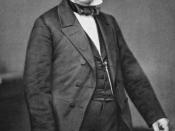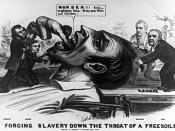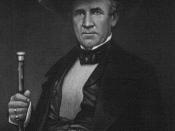In 1854, Senator Stephen Douglas from Illinois proposed a bill to organize the vast Nebraska territory west of Iowa and Missouri. Hoping to rally the Democratic party and unite the nation by reviving the idea of Manifest Destiny, Douglas proposed what would become known as the Kansas-Nebraska Act. Douglas unknowingly renewed a decades old debate over slavery and caused the nation to fall more deeply into a sectional divide that would split the Union in the years to come.
The origins of the Kansas-Nebraska Act lie in the uncontroversial issue of the advancement of Midwestern settlement. Farm families in Iowa and Missouri had longed to expand into the great frontier to the west, but this region had yet to be organized into a territory. Plus, many advocates of national expansion wanted to build a railroad from the East coast to the West coast and wished to have it pass through the Midwest so that these states could realize the economic benefits that a railroad would bring.
A railroad linking the Midwest to the coasts would also enhance the importance of the Midwest and boost the region's political influence in national politics. Stephen Douglas, a senator from Illinois, embraced the ideas of a railroad to the Pacific and the organization of the Nebraska territory as ways to unite the rival factions of the Democratic party behind the doctrine of Manifest Destiny. He wished to heal the wounds of sectionalism between the North and the South with the Kansas-Nebraska Act by focusing the country's attention on the railroad and movement westward.
Political pressures greatly shaped the Kansas-Nebraska Act and caused Douglas to make great modifications to his bill. While Southern congressmen wanted a railroad to link the East and West coasts, they opposed the idea of building it in the North.


